Elsa Murano
Elsa Alina Murano (née Casales; born August 14, 1959)[1] is the former President of Texas A&M University.[2][3][4]
Elsa Murano | |
|---|---|
 | |
| 23rd President of Texas A&M University | |
| In office January 3, 2008 – June 15, 2009 | |
| Preceded by | Ed Davis (Acting) |
| Succeeded by | R. Bowen Loftin |
| Under Secretary of Agriculture for Food Safety | |
| In office October 2001 – December 1, 2004 | |
| President | George W. Bush |
| Preceded by | Catherine Woteki |
| Succeeded by | Merle Pierson (Acting) |
| Personal details | |
| Born | Elsa Alina Casales August 14, 1959 Havana, Cuba |
| Political party | Republican |
| Spouse(s) | Peter Murano |
| Education | Miami Dade College Florida International University (BS) Virginia Polytechnic Institute and State University (MS, PhD) |
Dr. Murano currently serves as Director of the Norman E. Borlaug Institute for International Agriculture at Texas A&M. Prior to being appointed president in 2008, she served as the vice chancellor and dean of Texas A&M's College of Agriculture and Life Sciences from 2005 to 2007 and as the U.S. Under Secretary of Agriculture for Food Safety from 2001 to 2004.[5] In 2006 she joined the Board of Directors at Hormel Foods.[6]
Early life and education
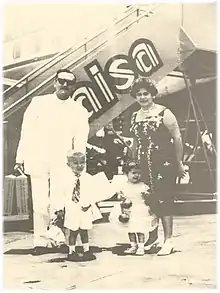
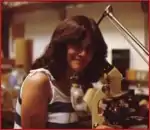
Murano was born as Elsa Alina Casales in 1959 in Havana, Cuba. She fled Cuba with her family on July 4, 1961, when her parents decided to leave during Fidel Castro's communist uprising.[7] The family fled to Curaçao, and then moved to Colombia, where her father worked for IBM. She later lived in Peru and then El Salvador before moving to Puerto Rico to start kindergarten. Once her parents divorced, she moved with her mother and three siblings into an apartment in Miami, Florida in 1973. Although Murano spoke very little English upon her arrival, she enrolled at West Miami Jr. High School and within one quarter, became fluent in the language. Her mother, who worked as a security guard and a department store clerk, urged the children to graduate high school and to attend college, encouraging them to pursue their dreams and make the most of opportunities in their new adopted homeland. In 1977, Murano graduated from Coral Park Senior High School in the top 10% of her graduating class, and enrolled full-time at Miami Dade College, a nearby junior college, while working 30 hrs/week at Kelly Tractor Company in the Service Department. After two years at Miami-Dade where she earned an associate degree, she transferred to Florida International University, relying on loans and scholarships to handle tuition costs. She received her bachelor's degree in biological sciences from FIU in 1981.
Though she planned on attending medical school, she was more interested in research, and decided to expand her educational background. She was accepted into the graduate program at Virginia Tech where she received a master's degree in anaerobic microbiology in 1987, and then a doctorate in food science and technology in 1990 with specialty in food safety.[8] While in graduate school in 1985, she married Dr. Peter Murano, whom she had met at FIU. He is now a retired professor of Nutrition and Food Science at Texas A&M University and served as Deputy Administrator of Food and Nutrition Service at USDA, where he was in charge of the National School Lunch Program, WIC, and other programs under President George W. Bush.
Professorships and USDA Undersecretaryship
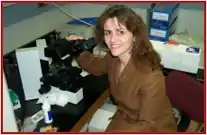
From 1990 to 1995, Murano served as an assistant professor in the Department of Microbiology, Immunology and Preventive Medicine at Iowa State University where she also served as Researcher-in-Charge of the Food Irradiation Facility.[9] In 1995, she was granted tenure at Iowa State. Shortly thereafter, she was recruited by Texas A&M and became associate professor of Food Science & Technology in the Department of Animal Science, as well as associate director of the Center for Food Safety within the Institute for Food Science and Engineering. She later served as director of the center from 1997 to 2001. During this time, she became a full professor and the holder of the Sadie Hatfield Endowed Professorship in Agriculture.

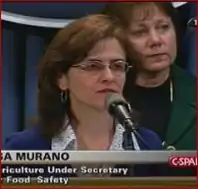
In 2001, due to Dr. Murano's reputation as one of the top experts in her field, U.S. president George W. Bush appointed her as the Under Secretary of Agriculture for Food Safety for the U.S. Department of Agriculture, the highest ranking food safety U.S. government official, representing U.S. food safety policy at international standard-setting organizations such as the Codex Alimentarius Commission. As the Undersecretary, she oversaw Food Safety and Inspection Service policies, ensuring U.S. meat products are safe, wholesome, and correctly packaged.[10] Over the years in her position, she led efforts that resulted in dramatic decreases in the number of food recalls. Food recalls, which had been rising since the mid-1990s, decreased from 113 in 2002 to less than 50 in 2004 under her leadership.[7][11] Most importantly, the rate of illnesses due to E. coli O157:H7 was decreased by 42%, attaining the CDC's Healthy People 2010 Goals for Foodborne Illnesses due to this organism 6 years ahead of schedule. Under Dr. Murano's leadership, regulations were introduced that resulted in the successful control of contamination of meat products with Listeria monocytogenes. After the first case of mad cow disease was detected in the U.S., Dr. Murano and her team at the Food Safety and Inspection Service promptly developed regulations that effectively prevented it from entering the food supply. At the end of President Bush's first term in office, Dr. Murano returned to Texas A&M, where she was appointed Vice Chancellor and Dean of Agriculture & Life Sciences.[12]
Return to Texas A&M
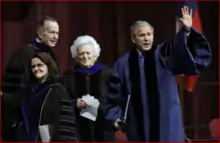
Murano returned to Texas A&M in January 2005, becoming the first woman, and first Hispanic to be named Vice Chancellor of Agricultural and Life Sciences of the Texas A&M University System, Dean of the College of Agriculture and Life Sciences, and Director of the Texas Agricultural Experiment Station.[8] During her tenure, Vice Chancellor Murano reversed the declining trend in student enrollment in the College of Agriculture, secured more than $40M for bio-fuels research initiative from private industry, increased legislative appropriations by 26%, and secured $50M from the Texas A&M System to build a new Agriculture Headquarters Complex. Such was her rapid rise to prominence within the University, that in December 2007 she became the sole finalist for the Texas A&M presidency, previously held by Robert Gates, who vacated the position in 2006 to become the U.S. Secretary of Defense.[13] The Texas A&M University System Board of Regents voted 8–1 in support of her — the one opposing vote came from Gene Stallings, who voted for another unspecified candidate.[5] Once Murano had taken full duties as president on January 3, 2008,[14] she became the first female, the first Hispanic-American, and the first person under the age of 50 to serve in the position.[5]
In her first-year, President Murano increased State appropriations to the University by more than $40M, significantly increased minority enrollment through a new initiative termed "Do You Wonder?", launched the successful renovation of the Memorial Student Center, helped navigate the campus through Hurricane Rita and its aftermath, created the "Aggie Assurance" tuition aid program, and secured funding to renovate Military Walk. In February 2009 (available here) and in spite of these accomplishments within just one year after her appointment, President Murano was criticized by A&M System Chancellor Mike McKinney during her annual evaluation. According to McKinney's evaluation, Dr. Murano averaged a 2.7 rating out of 5. In response, Dr. Murano wrote out a 30-page rebuttal of the evaluation, indicating that she disagreed with the results.[15] Professor Douglas Slack, a former speaker for the A&M faculty senate, expressed his shock by the nature of the assessment, and noted that the evaluation looked like it was "hastily done" and described it as a contrast to Murano's "well thought-out response" and evident outstanding performance.[16][17] It became known by the University community that President Murano had disagreed with Chancellor McKinney in several important new policies he was attempting to introduce into the Texas A&M System. One such policy was to force faculty to either teach or conduct research, not both, an idea that the faculty, and President Murano, vehemently opposed given that it would result in a decrease in the academic standing and reputation of the university. Another misguided policy which the Chancellor was trying to advance was the removal of tenure, which if executed, would have resulted in a mass exodus of some of the University's best faculty, relegating the institution to junior college status. According to Inside Higher Education, President Murano was a stalwart defender of campus-level autonomy, fending off McKinney's micromanaging style, which was seen by faculty as "over-the-top" and too willing to impose policies deemed by the University community as incredibly damaging to Texas A&M's mission and reputation. Such was her dedication to excellence that Texas A&M's ranking in U.S. News & World Reports rose from 24th to 21st during her tenure.
Ground-breaking Tuition program
Starting with the incoming freshmen in the Fall of 2008, Murano eliminated tuition for A&M students whose parents earn less than $60,000 annually.[18] Although some voiced criticism for this action, citing that a student's ability to pay for tuition is not necessarily dependent on the financial situation of his or her parents, President Murano's policy was ultimately proven to be ahead of its time and visionary. In 2019, this concept was implemented at the University of Texas, prompting many to ask whether Texas A&M would follow suit. John Sharp, current Chancellor of Texas A&M confirmed that the "Aggie Assurance Program" that was started by President Murano ten years earlier was still very much in effect and was evidence that Texas A&M was ahead of UT, having allowed over 33,000 undergraduate students from families earning less than $60,000 a year to attend college tuition free (Caller Times https://www.caller.com/story/opinion/2019/07/15/yes-texas-a-m-has-tuition-free-program-similar-uts/1738601001/).
MSC renovation plan
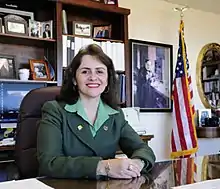
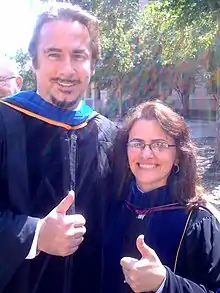
As of 2009, the Memorial Student Center building, often referred to as the University's "living room", was in significant need of structural repairs and upgrades to house the ever-growing student body. The project, originally spearheaded by former Vice President of Student Affairs Dean Bresciani, was initially proposed with partial access to the facility during renovation.[19] One year after the project had been voted on by the student body, however, no progress had been made. After President Murano met with the architects and developers, she learned that the job might require different plans than had been presented to the students a year before by the previous administration. For one, the building was full of asbestos, so in order to maintain safety during removal, the entire building would need to be closed down during renovation. A referendum was called for by the students who felt they had been lied to by the previous administration. Ultimately, President Murano's plan was implemented and the MSC was fully renovated ahead of schedule and at a lower cost than anticipated. Today in 2020, it stands as one of the most significant symbols of Aggie pride on campus.
Return to the Faculty
On June 14, 2009, Dr. Murano resigned her position as president of Texas A&M effective on June 15. Dr. Murano stated, "It is clear that the differences in policy between myself and the Chancellor are insurmountable. My aim has been and always will be to do all I can to protect and enhance the reputation of this great university that I love so much. It is because of my deep and abiding passion for what the university represents, and for the people of the Aggie family, which reinforces my duty to do what is best for the University. Given that there seems to be significant differences of opinion and approaches between me and the Chancellor with respect to what is best for Texas A&M, I will be resigning as President of our beloved university, effective tomorrow, June 15, 2009, to return to the faculty".[20]
As stated above, Texas A&M University System Chancellor Mike McKinney had conducted a review of Murano. It was known that in addition to having differences with Murano, McKinney had often stated that regents were considering merging the positions of chancellor and president to save money. Such a statement raised a lot of suspicions as to whether McKinney had been planning this from the start of Murano's tenure and may have ultimately pushed Murano from her post. Murano disputed McKinney's review in a 30-page typed response sent March 10 to the chancellor and the regents. "Given the complete disconnection between Dr. McKinney's perception of my performance as president and all the evidence to the contrary, I can conclude that this review was not based on facts, as it goes against every review I have ever received in the positions I have held in my career, most notably that of Undersecretary for Food Safety, a Senate-confirmed position. Clearly, Chancellor McKinney needs to provide evidence to support his evaluation, which he has failed to do as of this writing" Murano wrote.[21][22]
For her part, President Murano argued that Chancellor McKinney would frequently exclude her as president, working out secret agreements with private companies to commercialize scientific advances, providing them with university funds without any due process or input by her administration. She argued that McKinney seemed to have hidden agendas and that his style was as far from shared governance as one can fathom. In light of what was clearly a review without substantiation, on June 9, 2009, the Faculty Senate at Texas A&M University met to consider drafting a vote of "no confidence" on the Chancellor, and a statement of support for President Murano. Many said that Murano was being punished because she defended members of the faculty, and the integrity of the University's mission, to her superiors. Dr. Angie Hill-Price, a former Speaker of the Senate, drew applause at the meeting after comments in which she called McKinney's review of President Murano as "unprofessional". She stated "Murano has worked very hard to engage faculty, she understands what shared governance means, and she's worked very hard implementing that at the university. And I think she's paying a price for working with the faculty" (The Eagle, June 9, 2009).
In a crowded and brief special meeting on June 15, 2009, the A&M System board of regents approved Murano's resignation and replaced her with the chief executive officer of A&M's branch campus in Galveston, R. Bowen Loftin. Murano returned to the faculty as a professor, with the Board awarding her the title of President Emerita. Murano was very well received by the faculty, and within a few months successfully restarted her research program by securing a $1M grant from USDA as the lead investigator of a consortium of Texas A&M scientists to work on determining how microbial pathogens contaminate produce in the field. About a year later, a new Board of Regents asked Chancellor McKinney to resign, which many saw as vindication for the faculty's vote of "no-confidence" on McKinney, their continued support for Murano, and recognition of her courage to do what was right to protect and elevate the University in spite of personal cost.
Director of the Norman E. Borlaug Institute for International Agriculture
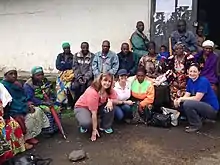
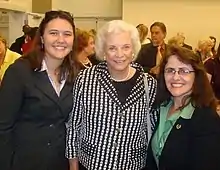
In 2012, Professor Murano was asked to serve as Director of the Norman Borlaug Institute for International Agriculture by then Vice Chancellor and Dean Dr. Mark Hussey, a position she has held ever since. As Director, Dr. Murano leads the institute in the implementation of projects in developing countries across the world in fulfillment of Dr. Borlaug's legacy to elevate small-holder farmers out of poverty and hunger through science. Under her leadership, the institute has secured funding in excess of $100M and is considered one of the leading international agriculture university-based programs in the U.S. The Borlaug Institute works in Africa, Central America and the Caribbean, and Asia in projects including production of agricultural crops and livestock, irrigation strategies involving mathematical modeling, compliance with food safety standards, nutrition, trade, education, and youth and gender issues. Dr. Murano has been serving on the Board of Hormel Foods Corporation since 2006, and currently also serves on the Board of Food Safety Net Services, and on the Food Safety Advisory Board for Ecolab, Inc. In 2019, she was elected Vice-Chair of the Board of Trustees of the International Livestock Research Institute, a research center that is part of the CGIAR System. She has subsequently been elected Chair of ILRI. Evident of her standing in the field of food safety, agriculture, as well as in academia and government service, Dr. Murano was asked to serve on an advisory committee to NASA's Food Production Laboratory to help identify issues to be considered in developing foods for long-term missions to Mars. In 2018, Dr. Murano was named "Maestro of Community Service" by Latino Leaders Magazine's Maestro Awards, and selected as Women Inc. Magazine's "One of the Most Influential Corporate Board Directors". In 2019, in recognition of her many accomplishments as Undersecretary, Dr. Murano was inducted into the Meat Industry Hall of Fame. Along with Justice Sandra Day O'Connor, Dr. Murano was inducted into the Texas Woman of the Year Hall of Fame. She was also inducted into the Miami-Dade College Alumni Hall of Fame, and in 2005, she was awarded the "American By Choice" Award by the U.S. Citizenship and Immigration Services of the Department of Homeland Security, along with Nobel Prize Laureate Eli Wiesel.
Additional recognition
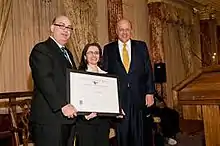
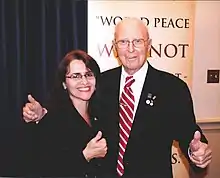
In 2020, Dr. Murano was appointed to the Council of Advisors to the Director General of the Interamerican Institute for Cooperation in Agriculture (IICA), as a member of the Steering Committee for the Global Confederation of Higher Education Associations for Agricultural and Life Sciences (GCHERA), and as a member of the Council of Advisors to the World Food Prize Foundation.[23]
References
- Haurwitz, Ralph K.M. (December 8, 2007). "A&M set to name first female and Hispanic president". Austin American-Statesman. Archived from the original on February 17, 2008. Retrieved February 29, 2008.
- "Elsa Murano Becomes First Hispanic to Lead Texas A&M". Dallas Morning News. Associated Press. January 3, 2008. Retrieved January 3, 2008.
- "Texas A&M president resigns before regents meeting". Dallas News. Associated Press. June 14, 2009. Retrieved June 14, 2009.
- Kever, Jeannie; Moises Mendoza (June 14, 2009). "Rift brews between A&M chancellor, president". Houston Chronicle. Retrieved June 14, 2009.
- Hacker, Holly (December 7, 2007). "Texas A&M poised to name Elsa Murano as president". Dallas Morning News. Retrieved December 8, 2007.
- Morningstar. "Elsa A. Murano Profile". Forbes.com. Retrieved December 14, 2011.
- Tresaugue, Matthew (December 18, 2007). "AN AMAZING JOURNEY FROM CUBA TO A&M". Houston Chronicle. Retrieved February 29, 2008.
- "Murano named vice chancellor at Texas A&M". Southwest Farm Press. November 22, 2004. Archived from the original on January 30, 2005. Retrieved February 29, 2008.
- "A&M President Honored By State Department". KBTX. February 29, 2008. Retrieved February 29, 2008.
- "USDA'S ELSA MURANO RESIGNS FOR POST AT TEXAS A&M". National Pork Producers Council. November 5, 2004. Retrieved March 30, 2008.
- Weise, Elizabeth (December 29, 2004). "The food industry digests a challenging year". USA Today. Retrieved March 30, 2008.
- "Statement of Dr. Elsa Murano USDA Under Secretary For Food Safety" (Press release). USDA. November 4, 2004. Archived from the original on October 7, 2008. Retrieved December 8, 2007.
- Tresaugue, Matthew (December 8, 2007). "Murano set to be A&M's first female president". Houston Chronicle. Retrieved December 8, 2007.
- "New president named at Texas A&M University". San Antonio Business Journal. January 3, 2008. Retrieved February 29, 2008.
- "Chancellor gives A&M president poor score".
- "A&M president scores poorly in first evaluation".
- "Murano Gets Poor First Annual Review".
- "Texas A&M expands offer of free tuition, TX".
- "Vote 'Yes' on MSC Renovation". Archived from the original on February 21, 2009.
- Fullhart, Steve (June 14, 2009). "A&M President Resigns Effective Monday". KBTX TV. Bryan, Texas. Retrieved June 14, 2009.
- Murano Performance Evaluation and Response - Official TAMU Correspondence
- A&M president resigns before regents meeting Archived June 17, 2009, at the Wayback Machine, Austin American-Statesman
- A&M president quits, regents pick temp replacement, AP
External links
| Political offices | ||
|---|---|---|
| Preceded by Catherine Woteki |
Under Secretary of Agriculture for Food Safety 2001–2004 |
Succeeded by Merle Pierson Acting |
| Academic offices | ||
| Preceded by Ed J. Davis Acting |
President of Texas A&M University 2008–2009 |
Succeeded by R. Bowen Loftin |